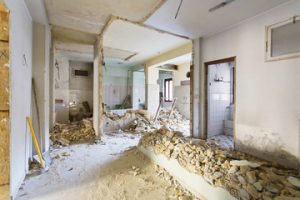
Cabinet Refinishing San Jose CA design provides an opportunity to express homeowners’ unique style preferences. However, successful implementations require an understanding of essential color principles. Maintenance considerations also vary depending on finish types. Different paints and stains respond differently to cooking splatters, steam, cleaning products, and constant handling.
One way to introduce dramatic contrast is through staining sections of a kitchen island and painting others a lighter shade. This layered approach is visually dynamic and timeless.
Paint
One of the best ways to make a dramatic change in your kitchen is through paint. It’s a budget-friendly option that allows you to experiment with a bold color and create a unique style for your kitchen.
There are many colors to choose from, so you can find a palette that fits your taste and personality. Whether you want to go for a classic white, a rich navy blue, or a vibrant red, there is a shade that will work for you. To add a hint of contrast, you can pair your bold cabinet color with a lighter counter, backsplash, or flooring.
When choosing your two cabinet tones, it’s important to keep in mind your kitchen’s focal point and design style. You can also try varying the materials used to create a unique two-tone cabinet design, such as wood and painted or stained cabinets. If you’re looking for a way to stand out, consider a metallic paint for your upper cabinets.
Styling Your Two-Tone Cabinets
When it comes to styling your two-tone cabinets, the sky’s the limit. You can use the 60-30-10 rule to guide you, which involves using a dominant color for 60% of your cabinets and a neutral for 30%. This helps to balance the vibrancy of your bright shade while still creating a clean and stylish kitchen.
A popular trend is to pair a light colored upper cabinet with a darker base cabinet. This can create a timeless look that will never go out of style. For a more modern feel, try matching your upper and lower cabinets with gold fixtures and hardware.
Before you begin painting, make sure that your cabinets are completely cleaned and dry. It’s also a good idea to lightly sand your cabinets before applying a primer, which will ensure a smooth and durable finish. Then, once your primer and paint have dried, you can reassemble your cabinets and add new knobs and handles.
If you’re not ready to commit to a two-tone cabinet design, you can opt for a dark stain on your base cabinets and a lighter shade on the upper cabinets. This is a great way to update your kitchen without a full remodel and will give you a similar visual effect as a two-tone cabinet.
Stain
Two-tone cabinet color schemes offer homeowners an opportunity to add visual depth and interest to kitchen environments. The contrasting colors help define specific areas of the space, enhancing organization and workflow for food preparation and cleanup. The layered design also enhances a sense of drama, transforming ordinary kitchen spaces into sophisticated and inviting culinary settings.
The best way to ensure a cohesive two-tone design is by choosing complementary colors. Using paint swatches and cabinet samples can help you achieve this, but it’s important to consider the color wheel as well. Complementary colors are those that are opposite each other on the color wheel, such as red and green. You can also select coordinating tones that are next to each other, like cream and light brown, or navy and cobalt blue.
Staining cabinets is another option for creating a two-tone design. By staining some cabinets and painting others a coordinating color, you can highlight the beauty of natural wood while adding a pop of color to your kitchen. Staining cabinets works especially well for high-wear areas, such as kitchen islands, coffee bars, and built-in desk areas.
Color proportion imbalances and mismatched finish types can cause a two-tone design to appear disjointed or unappealing. Color ratios should be carefully balanced to avoid visual competition, while contrasting finishes must be compatible for easy maintenance and touch-ups.
Cabinet refinishing professionals can help you choose the right two-tone cabinet design for your home. They can also apply a durable, moisture-resistant cabinet paint system that withstands kitchen humidity, cooking stains, and cleaning products.
To create a modern two-tone design, opt for a dark gray for the lower cabinets and a light gray for the uppers. This layered look is timeless and contemporary, pairing the warmth of natural wood with a soft, cool tone. The varying shades of gray create depth and visual interest in the kitchen, while maintaining an overall clean appearance. This paired look can be further enhanced by adding gold light fixtures and hardware to the room for an elevated, classic aesthetic.
Countertops
If you’re looking for a way to add contrast and personality to your kitchen, two-tone cabinets are the perfect solution. However, it’s important to remember that the colors you choose should complement each other and work well together in order to create a cohesive look. To get the most out of this design feature, consider incorporating other elements into your kitchen to add pops of color and create a visual flow.
When it comes to kitchen cabinet trends, many homeowners are choosing to go with a more bold and stylish look. This can be done through painting or staining your cabinets a rich and unique shade. It’s also a great idea to mix up the materials you use to make your kitchen feel more dynamic. For example, you could combine wood cabinets with glass or laminate surfaces for a modern and stylish combination.
Before you start applying your new paint, make sure to clean the surface thoroughly. This will help to ensure a smooth and even finish and prevent peeling later on. You can also use a degreaser to help remove any grease or grime that may be stuck on the surfaces. Once the cabinets are clean, you can begin by applying a base coat of the first color you want to use. This step is essential, as it will help the second coat of color adhere to the surface.
Once the base coat is dry, you can apply the second color of your choice to the upper cabinets. It’s a good idea to use the same technique as you did with the first coat, using long and even strokes. When you’re finished, be sure to let the cabinets dry completely before adding any hardware or accessories.
Should upper or lower cabinets be darker in a two-tone kitchen? Ultimately, it depends on personal preference and the aesthetic you want to achieve. However, if you’re unsure where to start, consider going with the classic approach of making the upper cabinets darker than the lower cabinets.
The flooring in your kitchen will also play a role in how your two-tone cabinets will look. Darker floors can ground lighter cabinets, while light flooring can brighten up a room with dark cabinets.
Backsplash
Whether you’re looking to create a classic look with darker upper cabinets and lighter lower cabinets or go bold and try something completely different, the options are limitless when it comes to two-tone cabinetry. This design option allows you to highlight the natural beauty of your wood kitchen cabinets while still creating a dynamic and contemporary space. Whether you choose to stain or paint, the two-tone trend adds depth, visual hierarchy, and style to your kitchen, making it a versatile choice for any home.
Choosing the right color combinations for your two-tone kitchen cabinets is just as important as deciding on the design itself. You want to be sure that your colors complement each other and tie in with the rest of your kitchen design, including flooring, countertops, backsplash, and appliances. Once you’ve chosen the colors for your kitchen cabinets, it’s time to apply the final touches. Start with a primer to ensure that your new coat of paint will adhere well and leave you with an even finish.
Next, decide on a method for applying the paint, such as brush or sprayer. It’s important to take your time and apply multiple thin coats for a smooth and polished result. When it comes to painting your cabinets, the best way to do it is with a professional to ensure that you get a flawless and durable finish.
Once the paint has dried, it’s time to apply the second color. Depending on your original color palette, you can contrast the two shades to create a dramatic and eye-catching design or blend them for a more subtle effect. Popular combinations often include dark colors on the bottom and light on top, such as navy and white or deep gray and soft beige.
Another common two-tone color scheme pairs a light shade with a dark hue to create a warm, welcoming aesthetic. For example, a soft blue with dark green base cabinets is a timeless and sophisticated look that works in any modern kitchen. When paired with gold hardware and fixtures, this design offers a touch of sophistication that never goes out of style.

